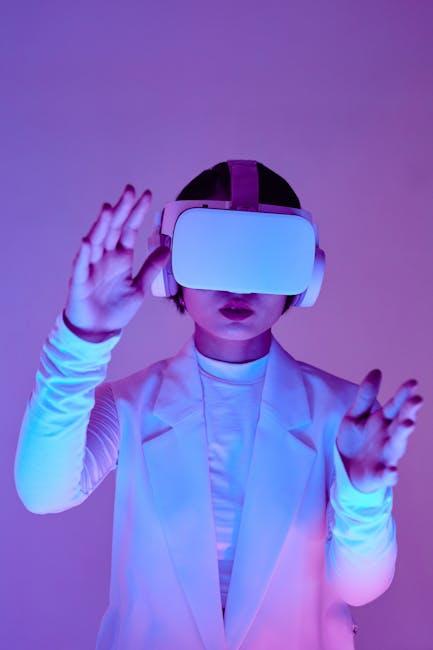The Role of Computer Vision in Retail and E-Commerce Automation
In an era where digital transformation is accelerating, computer vision is emerging as a game-changer in revolutionizing retail and e-commerce automation. By enabling machines to interpret and understand visual data, computer vision technologies empower businesses to automate operations, enhance customer experiences, and drive efficiency. This comprehensive article explores the pivotal role computer vision plays in the retail sector and e-commerce ecosystems, highlighting key applications, benefits, practical tips, and future trends you need to know.
What is Computer Vision and Why It Matters in Retail & E-Commerce?
Computer vision is a subset of artificial intelligence (AI) focused on enabling computers to analyze, identify, and make decisions based on digital images or videos. In retail and e-commerce, this translates into powerful applications such as real-time product recognition, automated inventory tracking, and personalized shopping experiences.
The growing adoption of computer vision tools is driven by the need for:
- Streamlined operations to reduce costs
- Enhanced customer service and satisfaction
- Improved accuracy in inventory management
- Faster checkouts
- Better data insights and analytics
Key Applications of Computer Vision in Retail and E-Commerce
1. Automated Checkout Systems
One of the most visible uses of computer vision in retail is automated checkout. Instead of traditional scanning, computer vision identifies products instantly when customers place items in a cart or basket. This technology speeds up the checkout process, reduces queues, and improves customer satisfaction.
2. Inventory Management and Stock Monitoring
Computer vision cameras mounted on shelves or in warehouses can continuously monitor stock levels, detect misplaced products, and alert staff about low inventory. This leads to more accurate restocking, less out-of-stock scenarios, and optimized supply chain operations.
3. Personalized Shopping Experiences
Through facial and gesture recognition, retailers can customize in-store advertising or online content based on customer preferences and behavior. Visual search capabilities allow shoppers to snap a photo of a product and instantly find it or similar items online, enhancing user engagement.
4. Theft Prevention and Security
Computer vision-powered surveillance systems can detect suspicious actions or potential theft in real-time and notify security personnel, reducing loss and improving safety.
5. Visual Search and Product Recommendations
Online retailers increasingly use computer vision to enable product discovery through images. Customers can upload photos or screenshots, and AI identifies products or suggests complementary items, improving conversion rates and sales.
Benefits of Integrating Computer Vision in Retail and E-Commerce
| Benefit | Impact on Retail/E-Commerce |
|---|---|
| Increased Efficiency | Automates repetitive tasks reducing human error and labor costs. |
| Enhanced Customer Experience | Provides seamless shopping with faster checkout and personalization. |
| Accurate Inventory Control | Real-time stock monitoring minimizes stockouts and overstock issues. |
| Improved Security | Early detection of fraud or theft lowers shrinkage rates. |
| Valuable Analytics | Generates actionable insights for marketing and operational optimization. |
Practical Tips for Implementing Computer Vision in Your Retail or E-Commerce Platform
- Assess your business needs. Identify which processes can be improved with visual automation.
- Choose scalable technology. Partner with vendors that offer flexible computer vision solutions able to grow with your business.
- Ensure data privacy and compliance. Be transparent about data collection and secure customer information.
- Integrate seamlessly. Computer vision must fit into existing POS, inventory, or CMS platforms for maximal ROI.
- Train your staff. Provide training to help employees adopt new tools and workflows effortlessly.
Case Study: How a Leading Retailer Boosted Sales with Computer Vision
A well-known retail chain implemented computer vision-powered automated checkout in over 100 stores. Here are the results after six months:
| Metric | Before Implementation | After 6 Months |
|---|---|---|
| Average Checkout Time | 5 minutes | 90 seconds |
| Customer Satisfaction Score | 78% | 92% |
| Theft Incidents | 15 per month | 7 per month |
| Inventory Accuracy | 85% | 97% |
This case clearly demonstrates the tangible benefits of incorporating computer vision solutions to drive business growth and operational excellence.
The Future of Computer Vision in Retail and E-Commerce
As AI technology advances, computer vision will become even more integral to retail and e-commerce automation. Emerging trends include:
- Augmented Reality (AR) Experiences: Enabling virtual try-ons and interactive product demos using real-time visual recognition.
- Robotic Process Automation: Robots equipped with computer vision assisting in stocking and delivery tasks.
- Emotion Recognition: Adapting marketing and customer service approaches based on shopper emotions and reactions.
- Cross-Channel Visual Data Integration: Combining online and offline data for a unified shopping experience.
Conclusion
Computer vision is reshaping the retail and e-commerce landscape by automating critical processes, enhancing customer interactions, and providing powerful data insights. From automated checkouts to personalized shopping journeys, the possibilities are vast and rapidly expanding. Retailers and online businesses who embrace computer vision technologies stand to gain a significant competitive advantage through operational efficiency and enriched customer engagement. If you haven’t yet explored the benefits of computer vision in your business, now is the perfect time to start.
Stay ahead of the digital retail revolution and unlock greater profitability with the power of computer vision!











